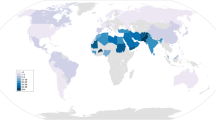Summary
-
1.
An investigation has been conducted to determine the mode of inheritance of frizzling in the domestic fowl and to substantiate or disprove the current theory that homozygosity for frizzling is lethal.
-
2.
Two types of frizzling, ordinary and extreme, are differentiated.
-
3.
Incubation records failed to show any evidence of a zygotic lethal factor being operative during embryonic development. It was found that no gametic lethal factors are involved.
-
4.
Mating of ordinary Frizzles to normally feathered fowls produced the 1:1 ratio of parent phaenotypes expected in a back cross to a recessive. Offspring from matingsinter se of normally feathered fowls extracted from matings of Frizzle x Frizzle were all normal.
-
5.
The progeny from matingsinter se of ordinary Frizzles gave a 3:1 ratio of Frizzles to Normals and in a random sample of this population the ratio of extreme to ordinary Frizzles was as 1:2.
-
6.
Five extreme Frizzles were tested and proved to be homozygous for the character, producing, when mated with a normally feathered male, only chicks showing the ordinary type of frizzling.
-
7.
Eighteen ordinary Frizzles were tested and found to be heterozygous.
-
8.
Reciprocal crosses showed that the character is not sex-linked.
Similar content being viewed by others
References
Aldrovandtjs, Ulyssis. (1600).Ornithologiae. Tomns Alter, p. 329.
Buffon, Leclerc (1799).Histoire Naturelle, xli, 189–90.
Darwin, Charles (1875).The Variation of Animais and Plants under Domestication. 2nd ed. i, 241. London, John Murray.
Davenport, C. B. (1906). “Inheritance in ponltry.”Carnegie Inslit. of Washington Publ. No. 52.
Dürigen, Bruno (1923).Die Geflügelzucht. Vierte und fünfte Auflage, i, 222. Berlin, Paul Parey.
Fisher, R. A. (1928).Statistical Methods for Research Workers. 2nd ed. Edinburgh, Oliver and Boyd.
Kirk, L. S. andImmer, F. R. (1928). “Application of goodness of fit tests to Mendelian class frequencies.”Scientific Agriculture, viii, No. 12, pp. 745–50.
Linné, Caul von (1758).Systema Naturae. Edit. Decima.
Marsden, William (1784).History of Sumatra. 2nd ed. p. 98. London.
Tegetmeier, W. B. (1887).The Poultry Book, p. 226. London, Geo. Routledge and Sons.
Author information
Authors and Affiliations
Additional information
The greater part of this investigation was conducted at the Animal Breeding Research Department, University of Edinburgh, in 1028, but the work was completed in 1929 at the University of Minnesota. This report is published with the approval of the Director as Paper No. 904 of theJournal Series of the Minnesota Agricultural Experiment Station.
Rights and permissions
About this article
Cite this article
Hutt, F.B. The genetics of the fowl. Journ. of Gen. 22, 109–127 (1930). https://doi.org/10.1007/BF02983371
Issue Date:
DOI: https://doi.org/10.1007/BF02983371




